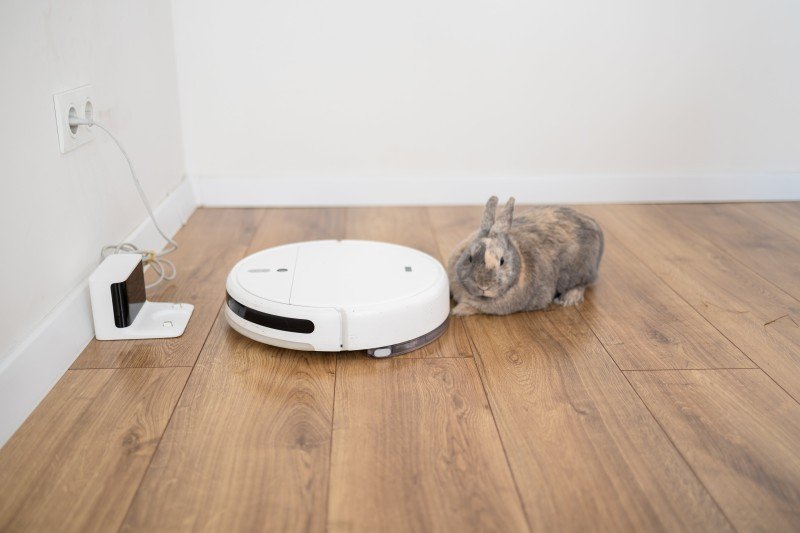13 Things About Autonomous Vacuum You May Not Know
The Rise of Autonomous Vacuums: Revolutionizing Home Cleaning
In the age of innovation, home chores are becoming increasingly automated, and one of the most significant advancements in this realm is the autonomous vacuum. These smart cleaning robots are developed to alleviate the drudgery of traditional vacuuming, making them popular amongst time-strapped families. This post checks out the development, performance, advantages, and limitations of autonomous vacuums, along with a contrast of some of the leading models on the marketplace today.
What is an Autonomous Vacuum?
An autonomous vacuum, also known as a robotic vacuum cleaner, is a little, automatic gadget that browses through your home to clean floorings without human intervention. Geared up with sensing Highly recommended Resource site , cams, and advanced software, these vacuums can spot barriers, prevent stairs, and optimize cleaning paths. They generally operate from a rechargeable battery, returning to their charging stations when their power is low or when cleaning tasks are completed.
Key Features of Autonomous Vacuums
Smart Navigation:
- Utilizes sensors and algorithms to map the environment.
- Can navigate complicated designs and avoid obstacles.
Scheduling:
- Allows users to set cleaning times.
- Can run when the home is empty, making sure minimal disruption.
Connectivity:
- Many designs link to Wi-Fi, enabling app control and combination with smart home systems.
- Users can tailor settings, check cleaning status, and receive notices through mobile applications.
Suction Power:
- Varies between designs; some offer adjustable suction settings for different floor types.
- High-end models include effective suction efficient in getting pet hair and deep dirt.
Floor Type Adaptability:
- Capable of cleaning carpets, wood, tiles, and more.
- Particular designs focus on tailored cleaning for multiple surface areas.
The Advantages of Using Autonomous Vacuums
1. Time-Saving
One of the most substantial advantages of autonomous vacuums is the quantity of time they save. Instead of spending hours pressing a traditional vacuum, house owners can set robotic vacuums to clean while they are taken part in other activities.
2. Constant Cleaning Schedule
With the capability to arrange cleansings, these vacuums make sure that areas are regularly cleaned up, resulting in a cleaner home overall. Regular cleaning assists maintain indoor air quality, specifically for households with allergies or asthma.
3. Smart Home Integration
Many autonomous vacuums can be incorporated with wise home systems for seamless operation. House owners can control their vacuums through voice commands through devices like Amazon Alexa or Google Assistant, improving user convenience.
4. Compact Design
The slim profile of these gadgets permits them to clean under furnishings, such as sofas and beds, where standard vacuums frequently can not reach.
5. Pet-Friendly
For family pet owners, autonomous vacuums can be a game-changer, as they are typically equipped with specialized features for picking up pet hair and dander, adding to a cleaner home environment.
Limitations of Autonomous Vacuums
Regardless of their lots of advantages, autonomous vacuums also have limitations:
1. Limited Deep Cleaning
While these vacuums efficiently preserve cleanliness, they might not replace the effectiveness of a deep clean offered by standard vacuums, especially for heavily soiled locations.
2. Capability Constraints
A lot of autonomous vacuums featured small dust bins that require to be emptied often, particularly in larger homes or homes with animals. This can be a trouble for some users.
3. Navigation Challenges
Although navigation technology is continuously improving, some designs might deal with specific designs, particularly intricate spaces with various challenges or really small rooms.
4. Cost Point
While rates have actually ended up being more accessible, high-end models can still be rather pricey, posturing a barrier for some customers.
Contrast of Top Autonomous Vacuum Models
Design
Smart Features
Battery Life
Suction Strength
Price Range
iRobot Roomba 980
App Control, Voice Assistant
120 minutes
1700 Pa
₤ 700 – ₤ 900
Roborock S6 MaxV
Advanced Mapping, Connectable
180 minutes
2500 Pa
₤ 600 – ₤ 800
Ecovacs Deebot Ozmo
Mopping, Smart Home
110 minutes
1500 Pa
₤ 450 – ₤ 700
Neato Botvac D7
Laser Navigation, Custom Zones
120 minutes
2000 Pa
₤ 800 – ₤ 900
Shark IQ Robot
Self-Emptying Base, Smart Map
90 minutes
1500 Pa
₤ 400 – ₤ 600
Notable Takeaways
- Smart Features: Consumers should focus on models offering robust clever features for convenience and efficiency.
- Battery Life: A longer battery life is useful for larger living areas.
- Suction Strength: Depending on family needs, varying suction power can significantly impact cleaning performance.
FAQs about Autonomous Vacuums
Q1: How do I preserve my autonomous vacuum?
A: Regular upkeep consists of cleaning the brushes, clearing the dustbin, and looking for obstructions. Additionally, keeping the sensing units clean up will help preserve navigation precision.
Q2: Can robotic vacuums clean rugs and carpets?
A: Yes, many robotic vacuums are developed to effectively clean both difficult surface areas and carpets. Nevertheless, suction power might vary based upon the design.
Q3: Do robotic vacuums need Wi-Fi?
A: While numerous autonomous vacuums benefit from Wi-Fi connectivity for app control and updates, some models can run individually without a cordless connection.
Q4: How often should I run my robotic vacuum?
A: It depends on your living situation, however running it several times a week is typically recommended, particularly for homes with pets.
In conclusion, autonomous vacuums represent a significant development in home cleaning technology, appealing benefit and efficiency. While these gadgets might not entirely replace standard vacuum cleaners, they are undoubtedly practical in maintaining a clean living environment. As technology continues to evolve, the future of home cleaning looks appealing, and these gadgets are at the leading edge of the revolution.
